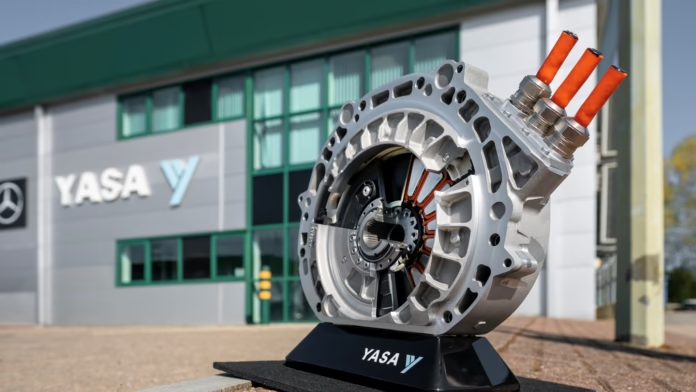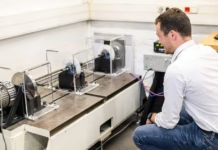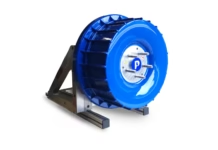Powering the Future of Electric Mobility
Recently, Yasa Motors, an innovative UK-based firm owned by Mercedes-Benz, unveiled a remarkable advance: an ultralight electric motor weighing only 13.1 kilograms yet capable of generating 738 brake horsepower (bhp). This achievement sets a new unofficial global record for power density in electric motors across all industries, underscoring the pivotal role of axial flux motor design in enabling lighter, more powerful, and cost-effective electric drivetrains. Yasa’s breakthrough promises to reshape EV applications from supercars to commercial vehicles by dramatically improving performance, compactness, and scalability.
A Groundbreaking Leap in Electric Motor Power Density
Yasa’s newly developed motor boasts an astounding 56 bhp per kilogram, more than doubling the established industry norm of 20 bhp/kg. This power-to-weight ratio surpasses the previous record-holder, the Australian Equipmake HPM-400 motor, which produced 54 bhp/kg and weighed 40 kg, primarily serving aerospace and marine sectors. Unlike competitors, Yasa achieved this milestone without relying on exotic materials such as cobalt-iron laminations or advanced manufacturing techniques like 3D printing. The motor’s axial flux architecture—a flat, disc-like design—maximizes torque and power output relative to size and weight while maintaining production feasibility at large scale. This combination of high power density and manufacturability is pivotal in pushing electric motors beyond niche, experimental use toward wide adoption in high-performance EVs and mainstream vehicles.
Practical Implications for Electric Vehicle Applications
This technology breakthrough directly benefits various electric vehicle applications. Lightweight and powerful motors mean EVs can achieve faster acceleration, enhanced torque, greater energy efficiency, and longer range—all critical for performance cars, urban transport, and commercial fleets. Yasa already supplies motors to prestigious brands such as Mercedes-AMG, Lamborghini, and Ferrari, indicating immediate relevance in luxury and sports EV development. More broadly, the scalable design and simplified material requirements enable mass production, with Yasa’s Oxfordshire facility capable of producing up to 50,000 units annually once finalized. This production scale supports integration into consumer EVs and commercial vehicles alike, further accelerating the transition to electrified transport systems globally.
Advantages Beyond Performance: Cost and Sustainability
Yasa’s strategic avoidance of rare or expensive materials and avoidance of 3D printing also contributes to cost-effective manufacturing, crucial for making advanced EV motors affordable and accessible. Reducing dependence on materials such as cobalt mitigates environmental and supply risks linked to mining and geopolitical issues. Furthermore, the motor’s design promotes durability and heat management capabilities, allowing sustained high-performance operation without overheating or efficiency loss. These attributes align with emerging trends in electric mobility, where companies seek not only peak performance but also sustainability, reliability, and total cost-of-ownership improvements. Consequently, Yasa’s motor represents more than raw power—it exemplifies how innovation can balance material accessibility, scalability, and eco-conscious engineering.
Future Outlook: Elevating Electric Vehicle Technology Globally
Yasa’s announcement signals a paradigm shift in electric motor design and electric vehicle engineering. By pushing power density to record levels without compromising practical manufacturability, this motor creates new opportunities for improving EV acceleration, range, and usability. The company plans continued testing and refinement in the coming months before commercial launch, potentially powering next-generation Mercedes-Benz EVs and other high-performance electric vehicles. As battery technology and charging infrastructure advance alongside these motors, electric vehicles will become increasingly competitive against internal combustion engines on all fronts. Moreover, Yasa’s breakthroughs may inspire further axial flux innovations across diverse industries, including aerospace, marine, and industrial automation. The future of electric mobility looks brighter, lighter, and more powerful than ever thanks to cutting-edge motors like Yasa’s record-setting design.







